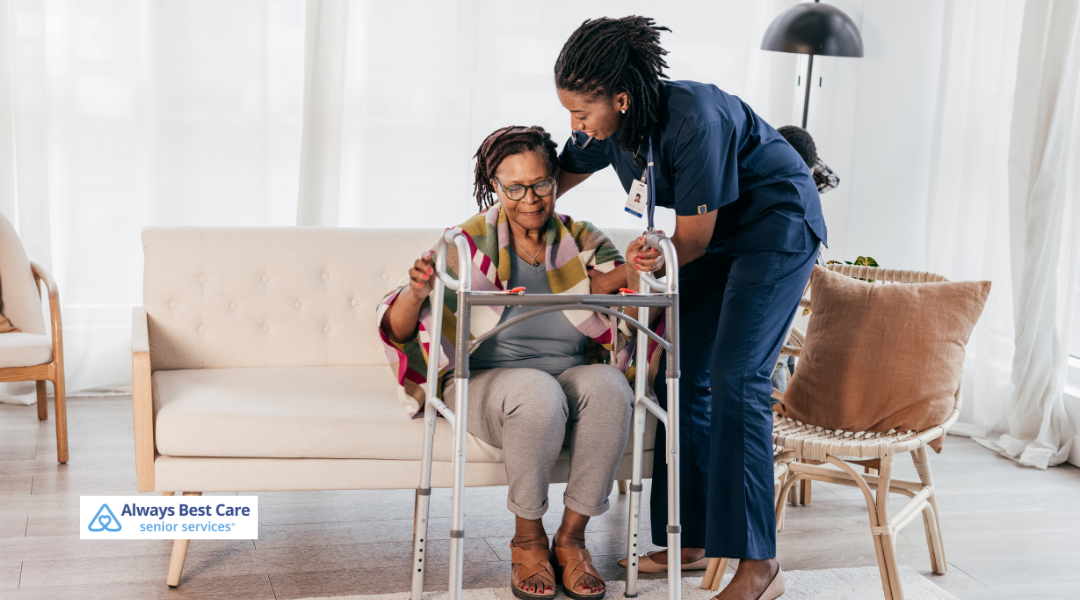Heat Stroke Prevention for Seniors: Stay Cool & Hydrated This Summer

Summer is well underway, and temperatures are beginning to soar across the country. While this warmth may be a welcome relief from a chilly spring, extreme heat can pose risks for seniors. As you age, your body is not able to regulate its temperature as well and may not be able to cool you down as effectively. In addition, certain health conditions and medications can also make you more sensitive to temperature changes.
Here are a few ways that you can beat the heat and reduce your risk of heat stroke this summer.
Table of Contents
Stay Cool
If you’re headed outside, try to avoid the hottest part of the day, which is generally between 11 a.m. and 3 p.m. when the sun is overhead. Look for shady places where you can get out of the sun and the temperature is a little cooler. This could be under an umbrella, awnings, trees, or even the shadow of a building. Find nearby locations that have air conditioning as well to give yourself a break and cool down.
Plan your outdoor time accordingly. If it’s going to be hot, don’t overexert yourself. Stick with less strenuous activities or break larger tasks into smaller chunks so you can rest in between.
Drink Up
Keep some cool, refreshing water on hand, and make sure you’re sipping it throughout the day, not just when you feel thirsty. You want to keep your body well hydrated. If you’re not a fan of plain water, try adding some fresh fruit or vegetable slices, drinking fruit juice, or sipping a sports drink with electrolytes. You can also enjoy a frozen treat like a popsicle or smoothie. Munching on foods that have higher water content like watermelon, cantaloupe, oranges, peaches, strawberries, or celery can help too.
Dress Appropriately
Stay cool by dressing in light, airy fabrics such as cotton or linen. Choose light colors as well as they don’t absorb as much heat. Round out your outfit with a wide-brimmed hat to keep the sun off of your face, neck, and shoulders, as well as some sunglasses that offer UVA and UVB protection. Lather sunscreen on any exposed skin, and don’t forget to continue reapplying throughout the day.
Know the Warning Signs of Heat Exhaustion and Heat Stroke
Heat exhaustion is a precursor to heat stroke, when your body begins to get overheated. Warning signs include:
- Excessive sweating
- Cool, clammy skin
- Exhaustion
- Muscle cramps or weakness
- Rapid, weak pulse
Move out of the sun to a cooler location and continue sipping on water. Placing cool, damp cloths on your forehead, neck, and armpits can help bring your temperature down. Seek medical attention to be safe, even if you begin feeling better.
If left untreated, heat stroke can develop. If you notice any of these symptoms, get help immediately:
- Headache
- Dizziness
- Confusion
- Vomiting
- Red, dry skin
- Temperature of 103 degrees Fahrenheit or greater
- Rapid, strong pulse
Stay Safe
It is a good idea to stay indoors with a fan or air conditioning when it is extremely hot outside. Listen to your body, and if you feel like the heat is bothering you, take steps to cool down and stay hydrated. An in-home caregiver can help you ensure you’re dressing appropriately for the weather, remembering to drink fluids, and not spending too much time in the sun. They can also stay alert for signs of heat exhaustion or heat stroke and help you get the medical care you need.
Contact Always Best Care at (855) 470-2273 to learn more about the benefits of partnering with an in-home care provider this summer and to schedule a free consultation.





